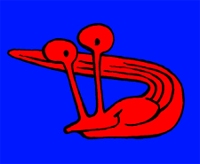|
|
|
|
|
Galleria Tassonomica
di
Natura Mediterraneo
|
|
|
| Autore |
 Discussione Discussione  |
|
|
Cmb
Moderatore
    

Città: Buers
Prov.: Estero
Regione: Austria

12844 Messaggi
Flora e Fauna |
 Inserito il - 13 agosto 2012 : 08:51:38 Inserito il - 13 agosto 2012 : 08:51:38


|
Nuova letteratura da: Link
SHELL POLYMORPHISM IN THE LAND-SNAIL CEPAEA NEMORALIS (L.) ALONG A WEST-EAST TRANSECT IN CONTINENTAL EUROPE
MA#321;GORZATA O#379;GO
Institute of Biology, Pomeranian University, Arciszewskiego 22B, 76-200 S#322;upsk, Poland
(e-mail: mozgo.biol(at)interia.pl This e-mail address is being protected from spambots. You need JavaScript enabled to view it )
The present study analyses variation in morph frequencies of C. nemoralis along a west-east transect spanning the whole range of the species in continental Europe. The transect passed along the 52°N parallel from the North Sea coast in the Netherlands to the Bug River in Poland (1,215 km). Samples were collected at the crossings of the parallel with consecutive meridians, within the radius of 15 km from the crossing point. The material comprises 27,666 individuals from 235 populations. C. nemoralis occurred along the whole transect, but was much more common and abundant in its eastern part. In large areas of the western part of the study area it was extremely rare and unabundant, indicating the severity of human impact on the environment, posed especially by industrial agriculture. Variation in morph frequencies did not show clear overall trends; there were some regularities but for the most part they did not coincide with large-scale climatic parameters. There were two significant trends: pink and mid-banded tended to increase eastwards and correlated positively with the measures of continentality. While the trend for mid-banded might be explicable on the grounds of climatic selection, for pink it is directly contrary to expectations and contrasts with the patterns of spatial distribution and temporal changes in other parts of Europe. Probably, the distribution of morph frequencies reflects foremost the founding events occurring during colonisation of novel habitats and range ex- pansion. Contrary to the large-scale variation, the habitat effect consistent with the climatic selection hypothe- sis was observed along the whole transect, with light shells being more frequent in open than in shaded habitats. As thrush anvils were rare in the study area, and in places where they were present no evidence of selective predation was found, this morph distribution resulted most probably from microclimatic selection. C. nemoralis inhabited predominantly anthropogenic, short-lived habitats, and a clear habitat effect observed throughout the study area indicates a high rate of adaptation of populations of this species to environmental conditions. Although expected on theoretical grounds, there was no decrease in the level of polymorphism towards the limits of the species range, and the differences between open and shaded habitats were not consistent in direction. The probable explanation lies with the fact that the current limits of the distribution of this species in continental Europe are not really ecologically marginal. Additionally, the specific mating system protects populations of this species from the impoverishment of the gene pool. Linkage disequilibria were common in the study area. Tight linkage between the loci controlling the colour of the shell and the presence or absence of banding limits the scope of genotypes available to selection, and might be one of the reasons why different populations adapt along different genetic routes to similar environmental conditions. This is probably an additional factor contributing to the maintenance of polymorphism in this strikingly variable species.
KEY WORDS: adaptation, climatic selection, evolutionary ecology, founder effects, microclimate, natural selec- tion, range expansion, microevolution
|
"Good people don't go into government" (D. Trump)

Link - nothing is more dangerous than the truth - solo chi conosce il passato, può capire il presente! - nothing is more dangerous than the truth - solo chi conosce il passato, può capire il presente!
|
|
| |
 Discussione Discussione  |
|
|
|
 Natura Mediterraneo Natura Mediterraneo |
© 2003-2024 Natura Mediterraneo |
 |
|
Leps.it | Herp.it | Lynkos.net
|

 Forum
|
Registrati
|
Msg attivi
|
Msg Recenti
|
Msg Pvt
|
Utenti
|
Galleria |
Map |
Forum
|
Registrati
|
Msg attivi
|
Msg Recenti
|
Msg Pvt
|
Utenti
|
Galleria |
Map |